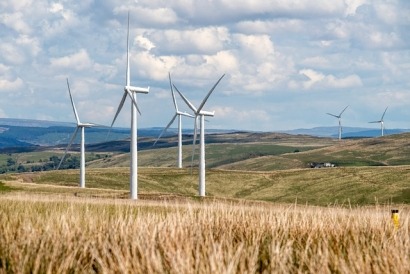
The wind farm will have an expected initial nameplate capacity of 248 MW, enough energy to power about 83,000 homes a year. Additionally, there will be an opportunity to add wind turbines in neighboring Sweet Grass County, as well as a lithium-ion battery energy storage system to shape Beaver Creek’s variable wind output. Montana wind has a high production rate that is especially valuable during extremely cold weather in the Pacific Northwest, when high pressure systems mean that Washington wind farms produce less energy.
"PSE is undergoing one of the largest clean energy transformations of any utility in the country,” said Mary Kipp, president and CEO of Puget Sound Energy. “Our priority is meeting our customers’ demand for clean energy while continuing to deliver the safe and reliable energy they also expect.”
The project will interconnect on NorthWestern Energy’s system and will use existing PSE transmission on the Colstrip Transmission System to bring the wind energy back to PSE customers.
The Beaver Creek project will utilize federal tax credits and comply with provisions of the Inflation Reduction Act that emphasize the importance of union and/or prevailing wage jobs and apprenticeship programs for tradespeople involved with the project.
The wind farm is expected to utilize an estimated 150-200 skilled workers during construction with an ongoing need for 10-15 permanent on-site workers during operation. Construction is set to begin in the spring of 2024, with the facility expecting to be operational in 2025.
Earlier this year, PSE announced the expansion of its largest wind farm in Washington state, located near Pomeroy, Washington; signed a contract to purchase wind power from Vantage Wind Energy Center in Ellensburg, Washington; and signed a long-term clean energy contract with Chelan PUD to receive renewable hydropower from the PUD’s two projects on the Columbia River.

 Pages you might like
Pages you might like








 Latest information
Latest information
 Follow official account
Follow official account
 Online support
Online support
 鄂ICP备2022017323号
鄂ICP备2022017323号
 鄂公网安备 42018502006493
鄂公网安备 42018502006493
 Launch Exhibition
Launch Exhibition
 Release information
Release information



 Today's topic
Today's topic








